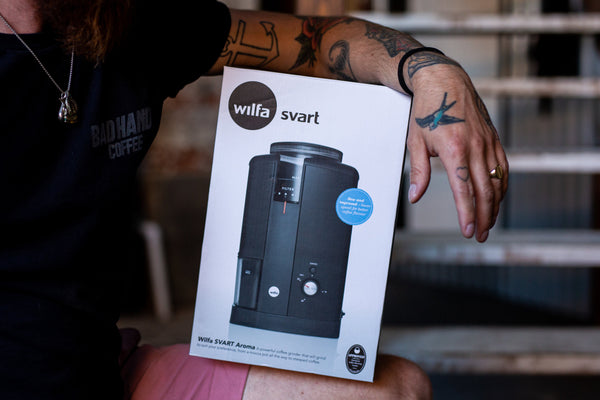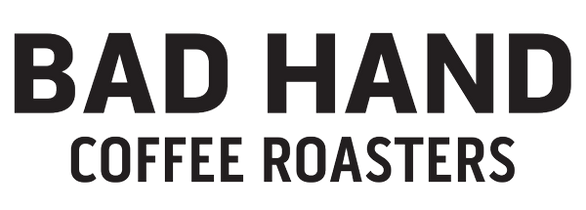
Want to make the perfect cup of coffee? You're in the right place.
Crafting the ultimate brew requires a few key ingredients: start with a fresh batch of kick ass coffee, use filtered water that’s just off the boil and use a brew recipe.
Grinding your beans fresh also makes a massive difference. And that’s we want to focus on for today’s Q&A.
When should I grind my coffee?
It’s best to grind coffee up freshly as and when you need it. The longer the grounds are exposed to oxygen, the staler and less flavoursome they’ll become (and nobody wants that).
As a general rule, if pre-ground coffee is your only option it’s best to try to use ground coffee within a week if you can. Whole beans won’t go off, but ideally should be used within two months of the roast date once opened.
What’s the best coffee grinder to get?
In order to get a balanced extraction, you need something that is going to give you consistent grind size. So, if you don’t already have one, choose a burr grinder rather than a blade grinder.

Burr grinders vs blade grinders
Burr grinders feed the beans in gradually, crushing them into a uniform size. Blade grinders work by chopping the beans up. The downside to blade grinders is that you can’t regulate the size and the results are often inconsistent each and every time you grind, so you might get chunks in with finer grounds, affecting the quality of the brew from one to the next.
Depending on your budget and kitchen space, The Wilfa Svart Aroma grinder is an awesome choice, particularly if you don't want to hand grind each morning. If however you enjoy a little bit of ritual in the morning the Hario Mini Mill coffee grinder is a good option too (and you can take it camping!).

That all makes sense. But what the heck is ‘a balanced extraction’?
It's why we grind coffee in the first place. We do it to extract the flavours inside the coffee bean: we wanna get to the good stuff. The coffee grounds provide a nice surface for the water to come into contact with – pouring it over solid, shiny beans wouldn’t yield the same results by any stretch of the imagination.
Extraction happens when we combine coffee grounds with water. This process of infusion pulls out the flavours of the roast. A balanced extraction is when the coffee’s best features all work together in harmony. It feels nice in your mouth, you can taste the flavours that are meant to come through (fruity, nutty, floral, chocolatey, sweet, creamy etc) and it has a nice aftertaste.
What does under-extracted and over-extracted coffee mean?
If a coffee is under extracted, it means not enough flavour has come from the beans because the coffee hasn't had enough contact time with the water. This could be down to brewing time, low brewing temperature or grind size.
Over-extraction happens when coffee is brewed for too long and there is too much contact time between the coffee and the water, using water that’s too hot or coffee at the wrong grind size can be factors in this.
You can also think of this in terms of how long you might wait when you brew a cup of tea. The shorter the time the tea bag is in the hot water the weaker and more uninteresting the tea (under-extracted). If you brew a tea bag for ages you'll notice more bitter, stewed and tanning flavours (over-extracted).
Okay, so grind size is pretty important then
Grind size definitely is important to perfecting your brew. If the grounds are too coarse, it could leave you with under-extracted coffee. If they’re too fine they could cause over-extraction.
However, we live in the real world and realise not everyone can grind fresh so don’t worry we can do it for you until you buy your very own grinder. Just select ‘brewing method’ from the drop-down list when you next order your coffee and we’ll sort the rest.
What size should I grind my coffee?
It depends on how you’re brewing it, but as a general guide:
Extra fine: Turkish coffee
Fine: Espresso, stovetop espresso makers like the Moka Pot, Aeropress (quick, 1-minute brew)
Medium-fine: Pour-overs like the v60, Aeropress (2-3 minute brew)
Medium: Drip-coffee machines, pour-overs like the v60, Aeropress (if you’re brewing for over 3 minutes)
Medium-coarse: Chemex and Clever Dripper
Coarse: French Press and Percolator
Extra-coarse: Cold-brew coffee
Of course this is just a guide and we encourage you to experiment with grind size to find what works for your brewing method and recipe.
Happy brewing :)
--------------


